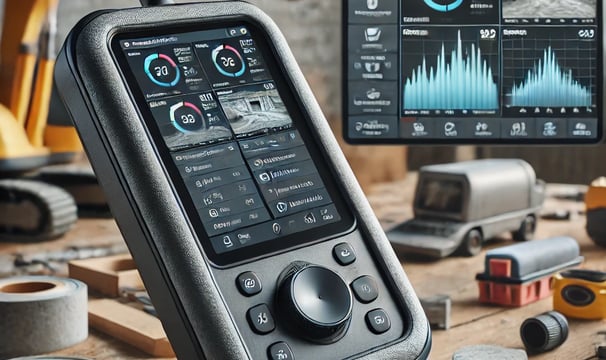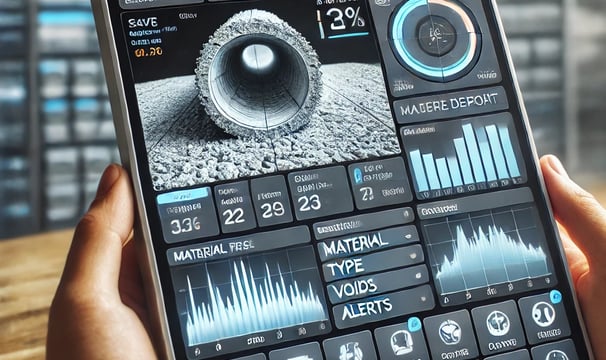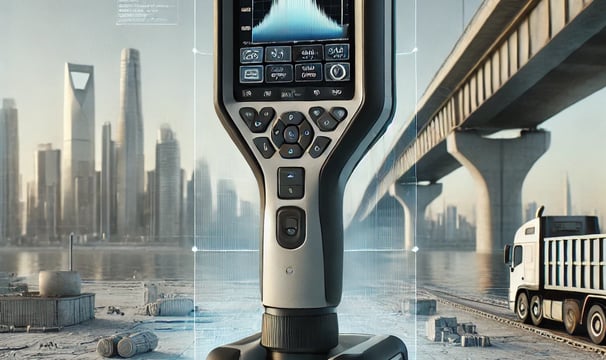revolutionize building inspection with
a portable, real-time ultrasound sensor designed to ensure building safety by quickly detecting structural flaws in materials like concrete, steel, and wood.


CONRAD
TEAM PLANOTION
coreguard
CoreGuard
a portable, real-time ultrasound sensor designed to ensure building safety by quickly detecting structural flaws in materials like concrete, steel, and wood.


Description
Coreguard revolutionizes building inspections by combining advanced ultrasonic sensing with portability and real-time analytics. Unlike traditional inspection methods that can be time-consuming and invasive, Coreguard offers a non-destructive, efficient solution that delivers precise results instantly, empowering inspectors and engineers to make informed decisions on-site.
Coreguard is designed to be user-friendly and versatile, allowing inspectors, engineers, and technicians to quickly assess the structural integrity of various materials. Below is an outline of its use process


Impacts
Enhanced Safety: Identifies structural flaws early, preventing accidents and ensuring the safety of buildings and infrastructure.
Cost Reduction: Minimizes costly repairs by detecting issues before they escalate.
Compliance Assurance: Helps buildings meet safety standards and regulations through accurate and reliable diagnostics.
Efficiency: Streamlines inspections, reducing the time and labor needed for comprehensive structural assessments.
Sustainability: Contributes to resource conservation by accurately targeting repairs and reducing unnecessary material use.
Materials Coreguard Can Be Used On
Concrete
Detects cracks, voids, and internal weaknesses in walls, foundations, and bridges.
Identifies early signs of spalling or rebar corrosion.
Steel
Pinpoints weld defects, cracks, and areas of internal corrosion in beams, columns, and pipelines.
Useful in industrial and high-rise building inspections.
Wood
Identifies internal rot, voids, and termite damage in wooden beams, floors, or furniture.
Monitors the health of aging wooden structures.
Composites
Inspects modern construction materials like fiber-reinforced polymers for delamination or internal damage.
Brick and Masonry
Assesses the integrity of brick walls and masonry for voids or cracks.
Other Specialized Materials
Can potentially be calibrated for use on glass, ceramics, or specific industrial materials based on future upgrades.
Key Features
Material Versatility
Works with multiple construction materials, including concrete, steel, and wood.
Data Storage and Sharing
Saves inspection reports and enables seamless data sharing for further analysis or compliance documentation.
Portable and Compact
Lightweight and handheld, ideal for on-site inspections in various environments.








Ultrasonic Technology
Employs high-frequency sound waves to inspect the internal integrity of structural materials.


Real-time Diagnostics
Provides instant feedback on structural flaws such as cracks, voids, and internal deterioration


User-Friendly Interface
Designed for ease of use, with an intuitive display for analyzing results on-site.
Steps for Usage


Preparation
Power on the device and calibrate it according to the material being inspected (e.g., concrete, steel, wood).
Attach the appropriate sensor head, if interchangeable, based on the material and inspection type


Inspection Setup
Position the Coreguard device on the surface of the material to be tested.
Ensure the contact area is clean and free of debris for accurate ultrasonic transmission.


Scanning
Activate the device to emit high-frequency ultrasonic waves into the material.
Move the device across the surface to scan for structural inconsistencies such as cracks, voids, or deterioration.
Real-Time Feedback
View diagnostics on the device's screen, which displays data such as the depth of cracks, internal voids, or density inconsistencies.
Use visual graphs or numerical outputs to interpret the structural integrity of the material.
Data Storage and Reporting
Save the inspection data for later analysis or compliance documentation.
Transfer the results to a connected device or cloud system if supported, for easy sharing with stakeholders.
Based on the diagnostics, decide on necessary actions, such as repairs, further testing, or declaring the structure safe.
